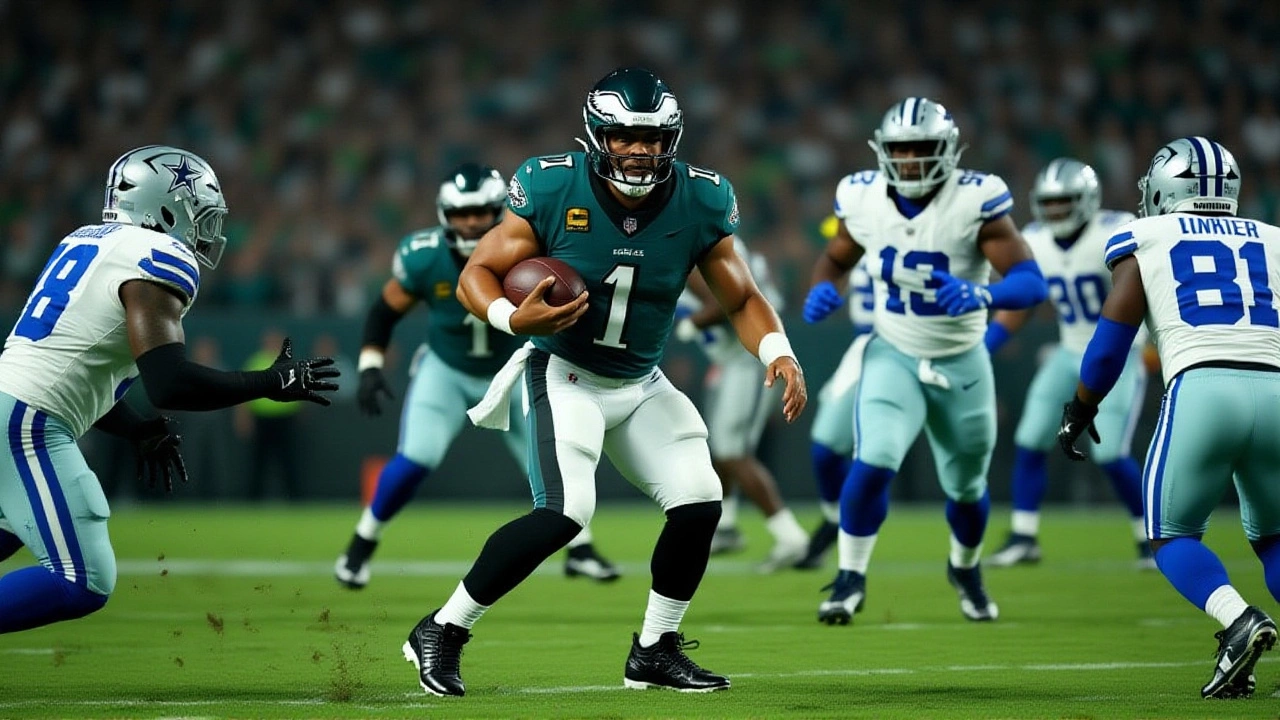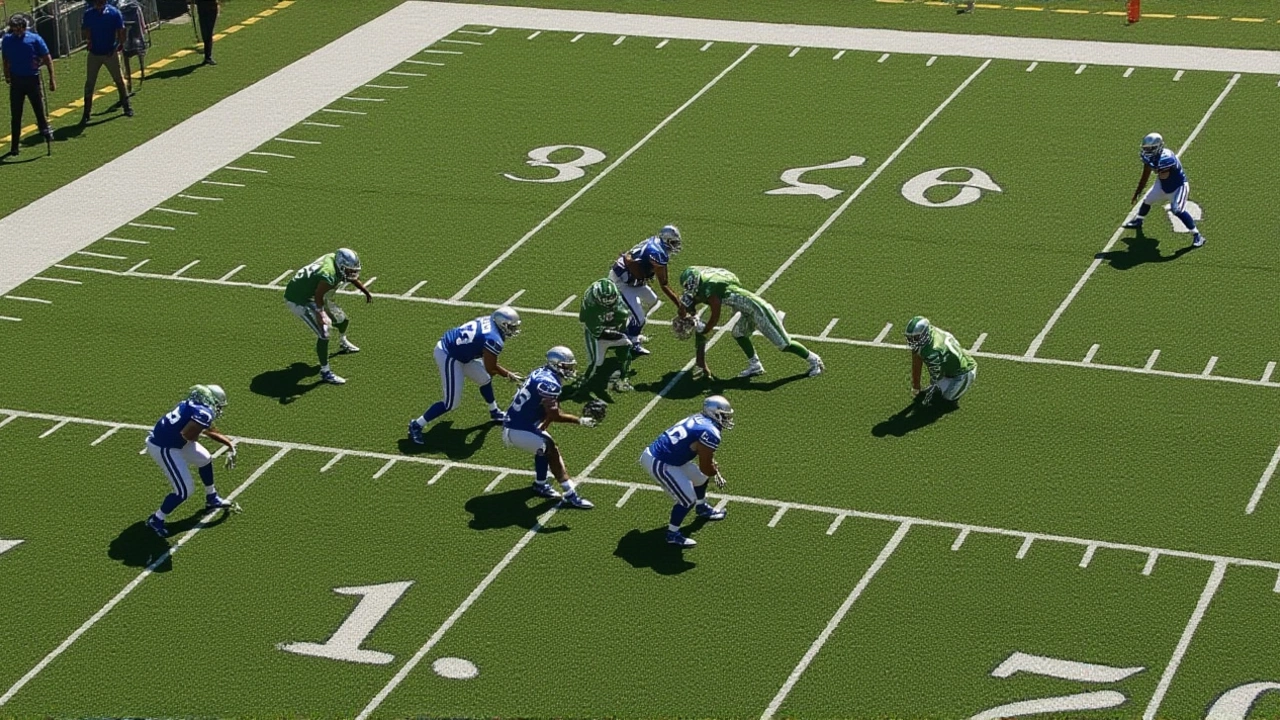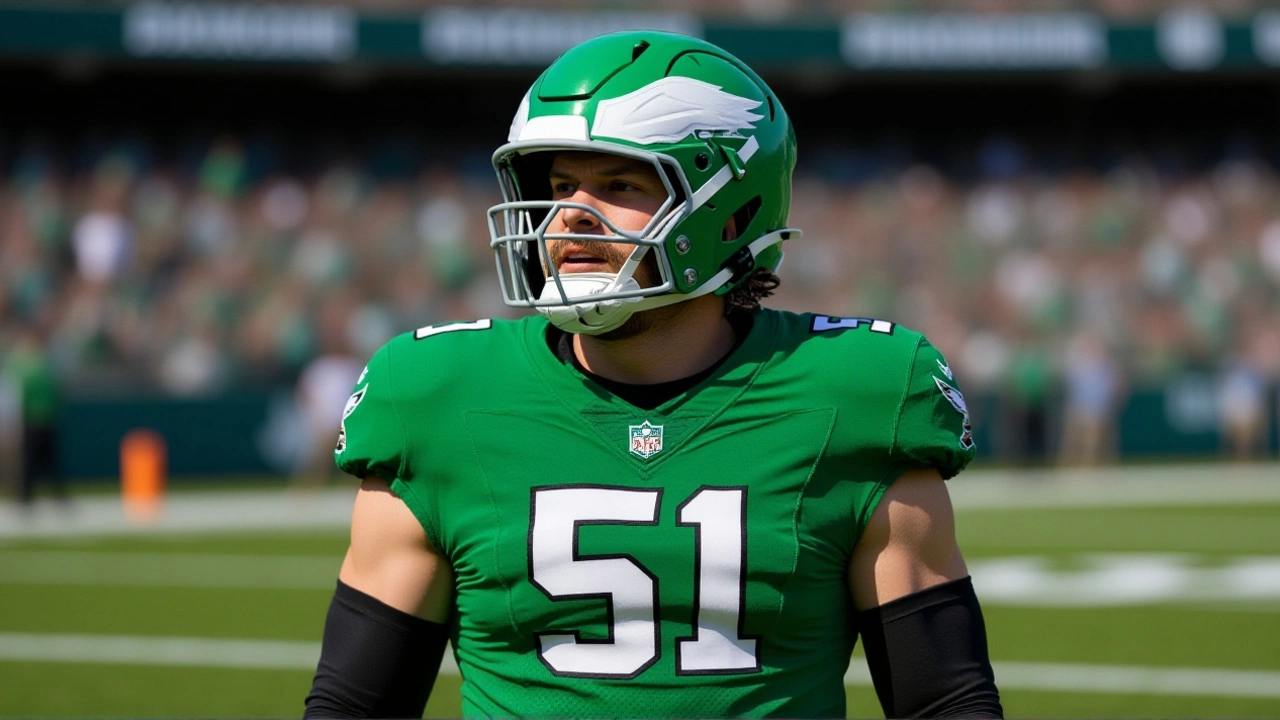When Cam Jurgens stepped onto the field at AT&T Stadium on Sunday, November 23, 2025, it wasn’t just another snap — it was a victory over uncertainty. The Philadelphia Eagles’ starting center, 26, had spent the week in the quiet, rigorous limbo of the NFL’s concussion protocol, missing practices at the NovaCare Complex in Philadelphia after taking a hard hit during a Week 11 practice. But by 11:30 a.m. Eastern Time on game day, his status changed from questionable to active. He was playing. And for an offense that had already lost two offensive linemen to injury this season, that mattered — a lot.
From Questionable to Active: A Week in the Protocol
Jurgens’ journey back to the field followed the strict, multi-stage NFL concussion protocol outlined in Article 36 of the Collective Bargaining Agreement. He was removed from activity on Monday, November 18, after reporting headaches and dizziness following a collision during a routine blocking drill. By Wednesday, he was ruled out of practice. Thursday, he underwent a neurological evaluation by the league’s independent neurotrauma consultant — a required step no team can bypass. He didn’t return to the field until Friday evening, when he passed light aerobic exertion and cognitive testing. The Eagles’ medical staff, led by Dr. David Gallo and Rick Burkholder, made the final call: he was cleared. No one outside the team knows the specifics — the NFL protects those details under HIPAA — but the process took five full days. That’s longer than many expect, and it’s intentional.It’s not just about physical recovery. Concussions are brain injuries. The protocol isn’t a checklist; it’s a safety net. Jurgens had been through this before — his first concussion came in Week 15 of the 2023 season, also against the Cowboys, at Lincoln Financial Field. He missed one game then. This time, he missed three practices and nearly the game itself.
Why This Matters for the Eagles’ Offensive Line
The Eagles entered Week 12 with a 7-4 record and a divisional battle looming against the 8-3 Dallas Cowboys. Their offensive line was already thin. Right guard Isaac Seumalo was nursing a knee strain. Left tackle Jordan Mailata had played through a shoulder issue for weeks. And here was Jurgens — the guy who snaps the ball, calls protections, and anchors the entire unit — sidelined.Without him, the Eagles would’ve started backup center Mickell Gladness, a 31-year-old journeyman with only 12 career NFL starts. That’s not just a downgrade — it’s a liability against a Cowboys defense that led the NFC in pressures per game. Jurgens’ return wasn’t just a morale boost. It was structural. His 6’3”, 305-pound frame is the fulcrum of their run game. His communication keeps the line synchronized. He’s the only center the Eagles have trusted since drafting him 49th overall in 2021 out of the University of Nebraska-Lincoln.

The Cowboys’ Side: A Game With Stakes
For the Cowboys, the game was about momentum. They were riding a four-game winning streak, looking to solidify their hold on the NFC East. But Jurgens’ activation didn’t change their game plan — it just made the matchup tougher. Their defensive line, led by Derek Barnett and Micah Parsons, had spent the week studying film of Jurgens’ footwork and timing. His return meant they’d have to adjust. The final score — 27-20 Cowboys — didn’t reflect how hard the Eagles fought. Jurgens played 68 of 71 offensive snaps. He allowed one pressure, per Pro Football Focus, and delivered clean snaps on 10 of 11 third-down plays.Still, the win came at a cost. The Eagles lost wide receiver A.J. Brown to a hamstring strain in the third quarter. And while Jurgens was cleared to play, the protocol doesn’t end when the final whistle blows.
What Comes Next: The 48-Hour Rule
NFL rules require all players who’ve suffered a concussion to undergo a follow-up neurological evaluation within 48 hours of the game. For Jurgens, that means a visit to the NovaCare Complex on Tuesday, November 25, 2025. The exam includes balance testing, reaction time assessments, and a full symptom review. If he passes, he’ll be cleared for non-contact practice by Wednesday. If not, he’ll remain out — no exceptions.It’s a system designed to protect players, even when they’re desperate to return. Jurgens, like many centers, is wired to play through pain. He’s the guy who blocks for 200-yard rushers and takes on 300-pound defensive tackles. But brains don’t heal like muscles. And the NFL knows it.

Historical Context: Concussions and the Evolution of Player Safety
Jurgens’ case isn’t unique — but it’s emblematic. In 2011, the NFL had no formal concussion protocol. By 2025, it’s one of the most scrutinized systems in sports. Over 200 players have been diagnosed with concussions during regular-season games since 2020. Only 12% returned to play within three days. Jurgens took five. That’s progress.It’s also a reminder that the game is changing. Teams now hire full-time neurologists. Players wear helmet sensors. Coaches are trained to spot subtle signs — a delayed response, a blank stare, a stumble after a hit. Jurgens didn’t fall to the ground. He didn’t lose consciousness. He just felt off. And he reported it. That’s the culture the league is trying to build.
Frequently Asked Questions
How long does the NFL concussion protocol typically take?
There’s no fixed timeline — it varies by individual. Most players take 5 to 7 days to complete the protocol, but some take longer if symptoms persist. Cam Jurgens took five days, which is typical for a player who missed multiple practices. The key is symptom resolution, not calendar days. The NFL requires clearance from both team medical staff and an independent neurologist before return-to-play.
Why didn’t the Eagles just bench Jurgens for the game?
Because Jurgens passed every stage of the protocol, including exertion tests and cognitive assessments. The Eagles’ medical staff, including Dr. David Gallo, determined he was physically and neurologically ready. Bench him and risk losing the game — and possibly the division — with a backup center? That’s a gamble most teams won’t take if the player is cleared. The decision is medical, not strategic.
What happens if Jurgens has another concussion?
A second concussion within a year raises serious concerns. The NFL and independent neurologists will likely recommend extended rest, possibly sidelining him for multiple weeks or even the rest of the season. Players with multiple concussions face increased risk of long-term cognitive issues. The Eagles will monitor him closely — and may adjust his workload in practice, especially in high-contact drills.
Is Cam Jurgens at higher risk for future concussions?
Yes. Research shows athletes who’ve suffered one concussion are 1.5 to 2 times more likely to suffer another, especially within the same season. Centers like Jurgens are particularly vulnerable — they’re often hit from below by defensive linemen and exposed to rotational forces during blocks. The Eagles’ medical team will now include him in their high-risk monitoring program, with more frequent baseline testing and reduced contact in practice.
How does this affect the Eagles’ offensive line moving forward?
Jurgens’ return stabilizes the unit, but the Eagles’ line remains fragile. With Seumalo and Mailata also playing through injuries, the team may prioritize protecting their offensive line in upcoming games — more short passes, quicker snaps, and fewer zone runs. They’re also likely to elevate backup center Mickell Gladness to the active roster permanently, ensuring depth. Long-term, the Eagles may explore adding a veteran center via trade before the December 3 waiver deadline.
What’s the NFL doing to prevent concussions in centers?
The NFL has introduced new helmet standards and banned certain blocking techniques that target the head and neck. They’ve also mandated that centers receive additional training on proper stance and leverage to reduce head exposure. In 2025, teams are required to use helmet impact sensors during practice — data from Jurgens’ helmet during his injury is being reviewed to see if the force exceeded safe thresholds. It’s not foolproof, but it’s progress.
